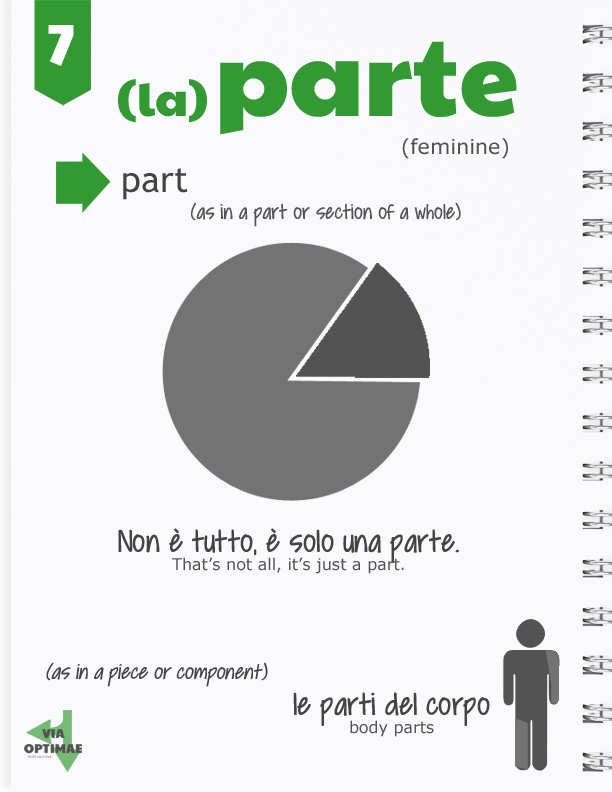(how to say "some" in Italian)
Sometimes, you'll want to refer to a thing without being specific about the quantity. This could be because the noun isn't easily countable (like water) or because it's plural but the amount is irrelevant.
In both instances, in English, you use the word "some":
some water (uncountable, singular)
some books (countable, plural)
In Italian, you use the Partitive Article. Don't be fooled by the complicated sounding name— it's easy!
It follows the same logic and patterns as the Definite Article…. So print pages 14 & 15 of the BASICS Digital Workbook and let's get started!
(New to this series?… You may want to start with…)
|
|
\/
A little word mash-up...
The partitive article is what happens when you take the preposition "di" and combine it with the Definite Articles:
As you can see, the "i" of "di" goes to "e", the two words get squished together, and if the original article starts with "l" that "l" gets doubled. The same is true for the plural forms:
All of the forms, including when to use each, can be summed up in the following chart:
Using with singular nouns...
Not all singular nouns can take the partitive article, it only works with "uncountable nouns." We'll save the difference between countable and uncountable for another day, but many liquids are considered "uncountable" and some food items can be as well. Here are a few:
l'acqua (water), il burro (butter), il latte (milk), il pane (bread), il riso (rice), il vino (wine), lo zucchero (sugar)
The difference in meaning between the definite and the partitive article is very similar from English to Italian. Consider these sentences:
l'acqua vs. dell'acqua
the water some water
Ho versato l'acqua nel bicchiere.
I poured the water in the glass.
Ho versato dell'acqua nel bicchiere.
I poured some water in the glass.
Both are fine sentences, but the first one seems to refer to previously mentioned water or specific water, whereas the second sentence, in both English and Italian, makes it clear that we're referring to an unspecified amount of no particular water.
Using with plural nouns...
Almost any plural noun can take the partitive article, as long as what we mean is an unspecified number. It can be useful when we don't know how many exactly, or when it doesn't matter how many:
i libri vs. dei libri
the books some books
—Ho comprato i libri.
I bought the books.
—Tutti i tre?
All three?
—Sì.
Yes.
—Ho comprato dei libri.
I bought some books.
—Sei andato da Feltrinelli?
You went to Feltrinelli bookstore?
—Sì.
Yes.
Facile, no? (Easy, right?)
If you haven't done so already, fill-in the "Notes" section of the Partitive Articles worksheet on page 14 of the Italian Basics digital workbook and then complete the quick exercises on page 15! (Submit your answers by email for free corrections!)
Potrebbe pure interessarti….
The Beginner's Italian Grammar Series, starting with:












%2Bfrom%2BVia%2BOptimae%2C%2Bwww.viaoptimae.com.png)

























+by+Alex+for+didattichiamo.blogspot.jpg)



